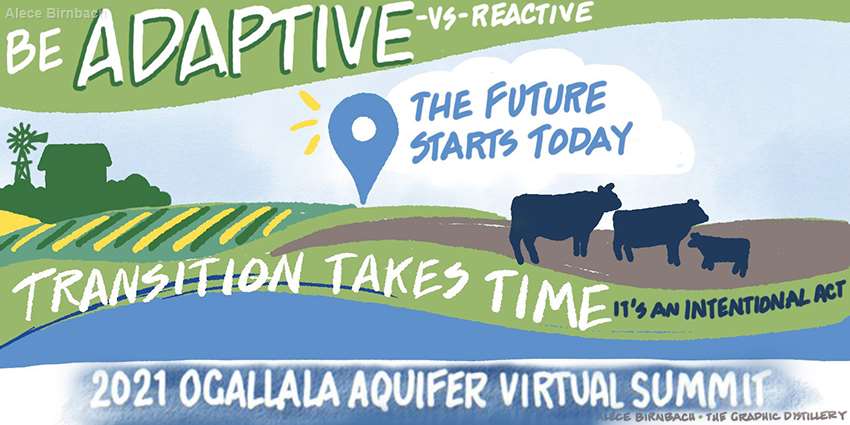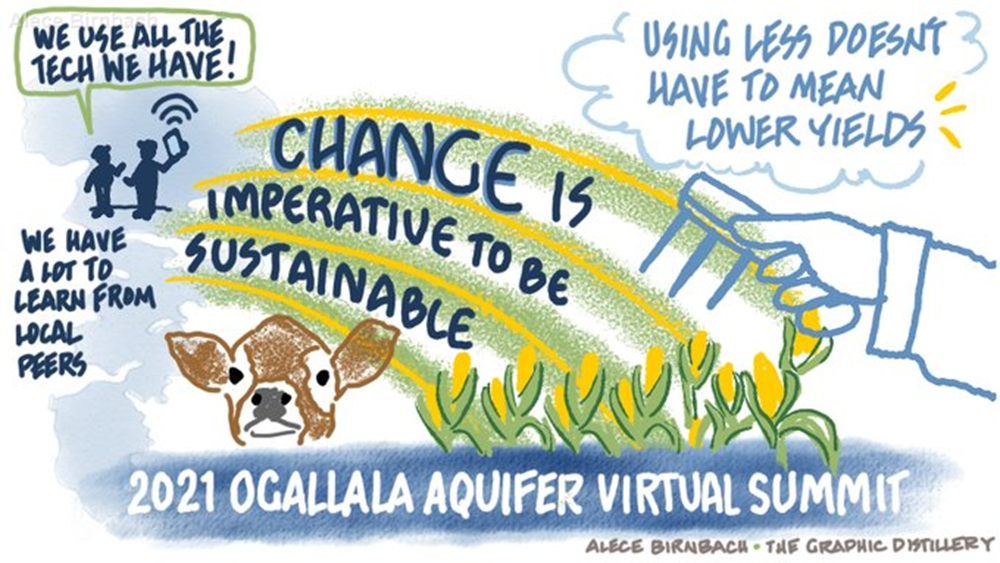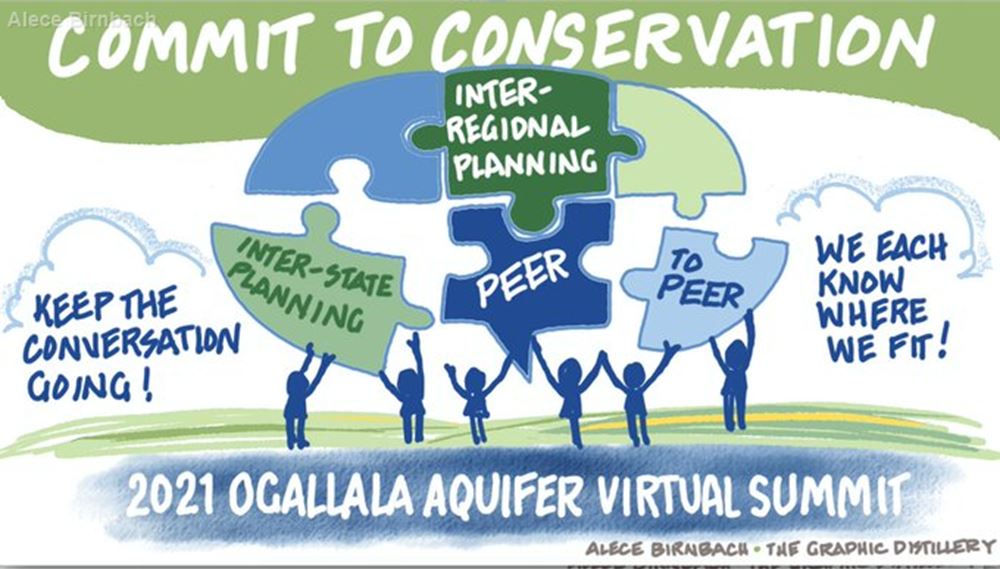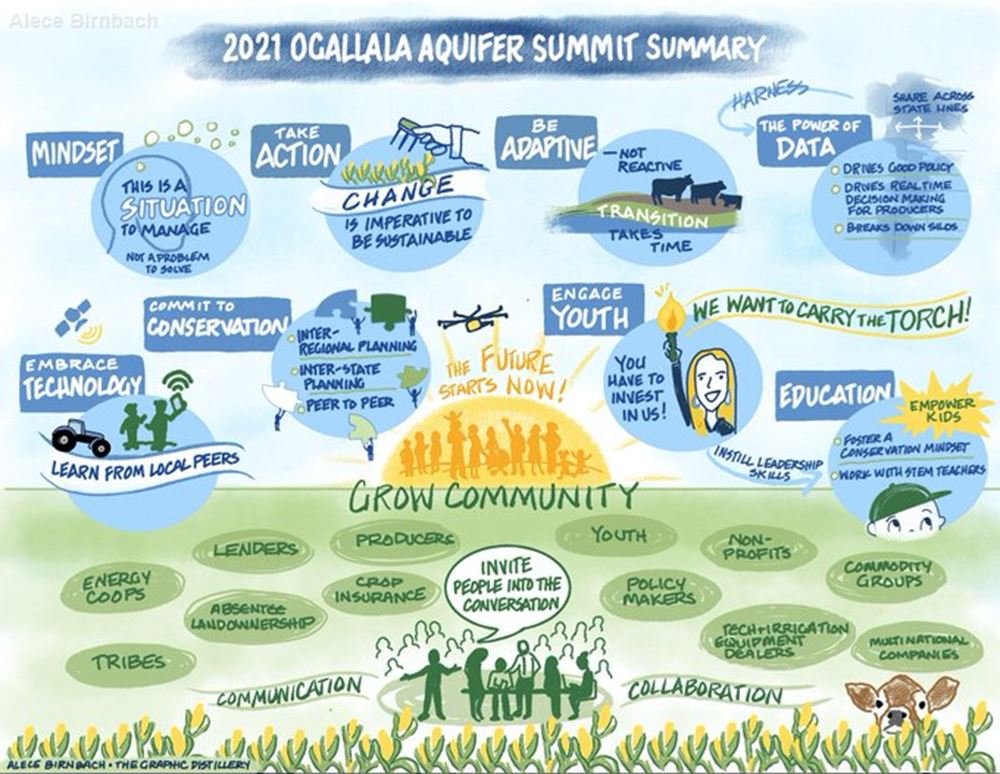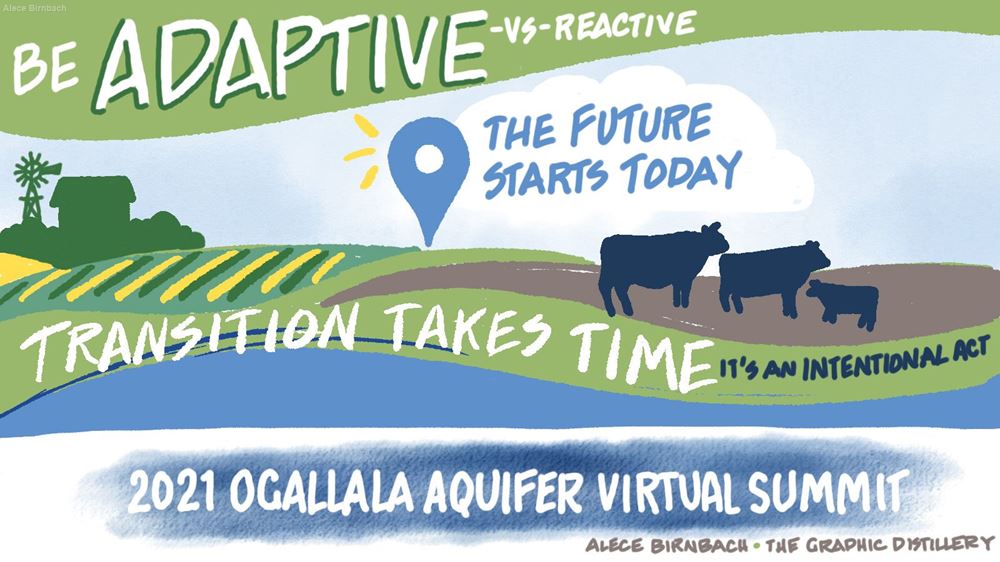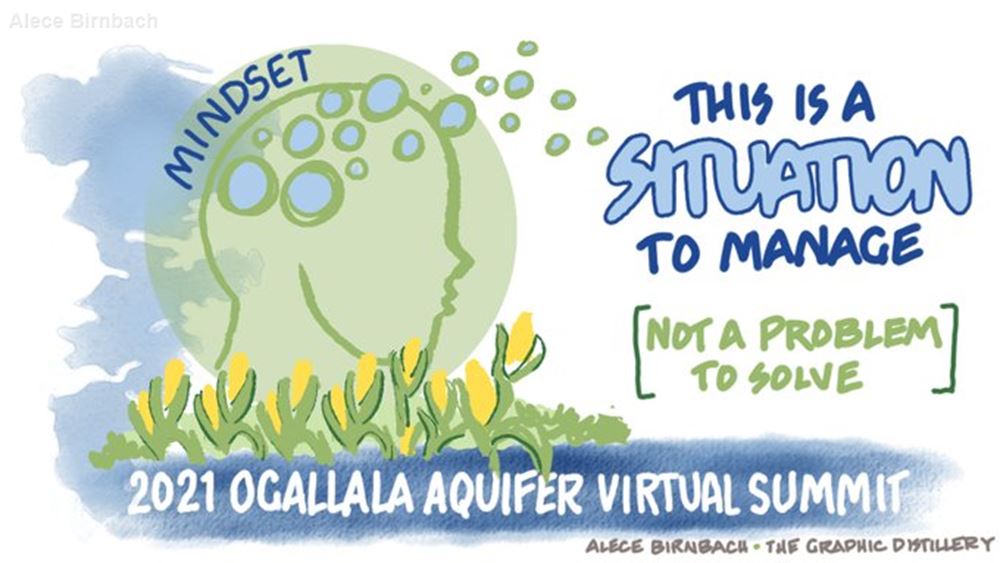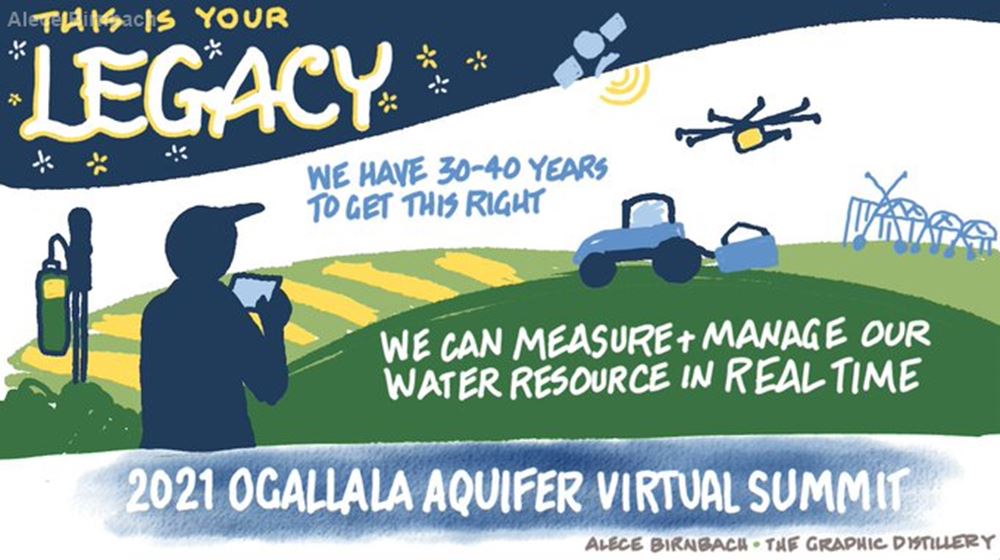The Ogallala Aquifer is a massive underground reservoir that lies beneath much of the High Plains region. The aquifer extends 175,000 square miles across eight states, including parts of Colorado, Kansas, Nebraska, New Mexico, Oklahoma, South Dakota, Texas and Wyoming. In many instances, the aquifer is the main source of water for both agricultural and municipal uses. The aquifer drives the economies of High Plains communities.
Like many natural resources, the Ogallala Aquifer is threatened by declining groundwater levels and water quality, which is exacerbated by the pressures of climate change.
The 2021 Ogallala Aquifer Summit was originally scheduled to be held March 30–31, 2020 in Amarillo. After being postponed due to the pandemic, the summit was held as a virtual two-day event. The summit focused on sharing information about community-led activities and identifying current barriers and opportunities related to effectively managing this valuable resource over the short and long term. The meeting took place on Zoom on February 24–25, 2021.
The theme of this year’s summit was “Tackling Tough Questions.” Texas Water Resources Institute (TWRI) director, John Tracy, Ph.D., introduced the goals of the summit during his remarks as the summit’s introductory keynote speaker
The summit had three main goals: 1) to increase networking and collaboration among the region’s water-focused community members, 2) to encourage momentum of activities related to advancing ag water management and sustaining the vitality of High Plains communities, and 3) to identify common vision, practices, and opportunities applicable across state lines that have the potential to benefit the aquifer region over the short and long-term.
Building partnerships
The 2021 Ogallala Aquifer Summit was intentionally framed to invite a broader, more diverse group of community stakeholders into the conversation to discuss the value of the water source and envision a plan for a more water-limited future.
Summit speakers and participants included producers, groundwater managers, research scientists, educators, agricultural lenders, energy company and commodity group representatives, state and federal agency staff and many others involved in water management. Participants from all eight Ogallala states attended, along with several individuals from across the nation. The summit drew in more than 200 participants each day, matching the number of attendees participating at the in-person event in 2018.
During breakout sessions, participants had the opportunity to share their ideas about and experiences with speaker-identified topics with their small groups.
“Breakout group discussions strengthened perspectives of what sustainable water use management might look like throughout the region,” said Ali Ajaz, Ph.D., a TWRI program specialist and summit participant.
Asking questions is the ongoing work of the region
Summit participants reflected on how to ensure a thriving future for the Ogallala region and identified shared concerns and approaches for moving forward. Key themes brought forward were that while there’s no “one-size-fits-all” approach to managing water-related challenges in the region, working across state lines and speaking a regional voice is critical.
For example, federal-level messaging often stresses the need to increase agricultural productivity to feed a global population, a goal that may not suit this water-limited region’s need. As a region, emphasizing that the priority is water use that will encourage viable communities and their economies will resound clearer through cross-state collaborative efforts and engagement with federal partners.
A second priority is mobilizing people region-wide to understand the value of the Ogallala Aquifer as a resource. As noted by Katie Ingels, communications director at the Kansas Water Office, “Each person living and working in the Ogallala region can make small decisions that add up to significant water savings important for the short and long-term financial solvency of many businesses and community members.”
Summit participants also identified the need to work together to better understand the time horizon, policies, incentives and water required to effectively transition some areas in coming decades where irrigation may not be viable for the long term to non-irrigated rangeland, based on the soils in these areas and other factors.
Leaning on future generations
An emerging theme identified by the speakers during panel sessions and the participants in breakout rooms was the need to responsibly “pass the torch” of protecting the Ogallala Aquifer on to future generations.
“We need to include the younger generation of producers and water experts in the policymaking process to ensure that the decisions are targeting modern-day challenges and opportunities for irrigated agriculture,” said Ajaz.
Summit speakers encouraged participants to work on creating a bridge that leverages and builds on the foundational knowledge of the previous generations of water managers while embracing current opportunities.
This includes catalyzing programming and policies that will support increased targeted and timed water use and other water-smart strategies for the region, whether the water in question falls as precipitation or is pumped from the aquifer.
Many speakers proposed that a way to engage younger audiences is to implement water education programs at grade school and high school levels. The Texas 4-H Water Ambassadors Program is one example of this type of program. This program exposes high school students to the political, social and scientific aspects of water-related issues and careers.
Macy Down, a high school senior and 4-H Water Ambassador from Yoakum County, provided closing keynote remarks at the summit. Down encouraged summit participants that she and many of her peers are ready, willing and eager to take on roles as water leaders in their communities.
Forging a sustainable future
The future of the Ogallala Aquifer depends on water users, water planners and other water decision-makers making informed, data-driven and proactive decisions to work towards protecting their water source.
Current examples of proactive approaches include events like the Ogallala Aquifer Summit, the expansion of the Master Irrigator and Testing Agricultural Solutions programs, and the adoption of new irrigation technologies.
Tracy noted that forging a sustainable future for the Ogallala region will require a shift in mindset for many stakeholders and water management leaders. “We need to realize that changes occurring in the Ogallala are not problems to be solved, but situations to be managed,” he said. “If we continue to try to solve the problem, we will never get ahead of it.”
More information about the summit is available via the Ogallala Water webpage, including ten white papers and a series of videos provided by representatives from each state that summarize current activities and perspectives.
The summit was coordinated by the USDA-NIFA-funded Ogallala Water Coordinated Agriculture Project, along with co-convening partners from Texas A&M University, the Kansas Water Office and the USDA-ARS-funded Ogallala Aquifer Program.

